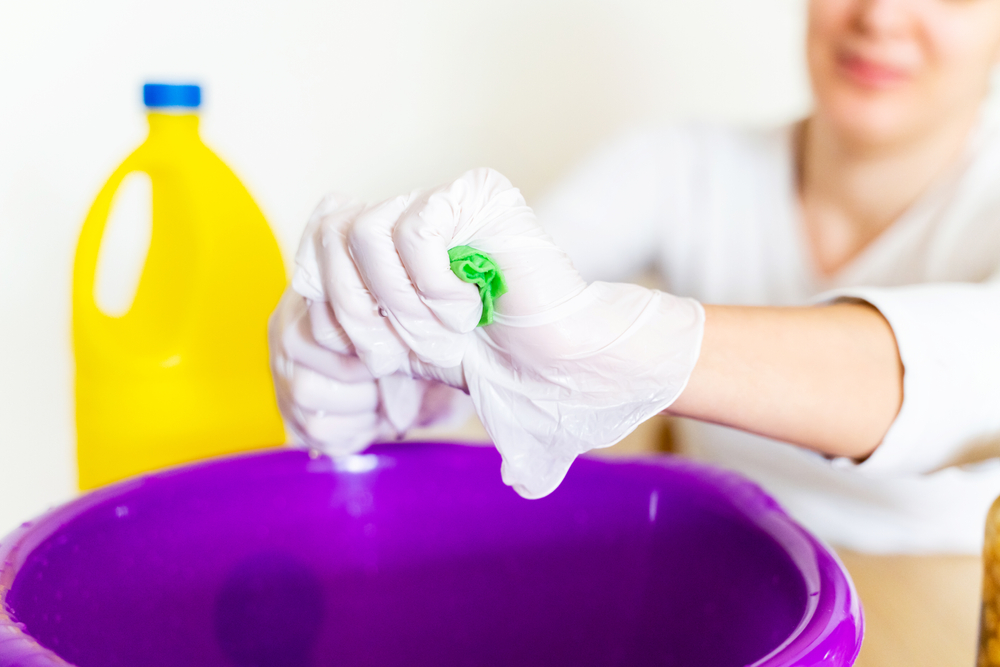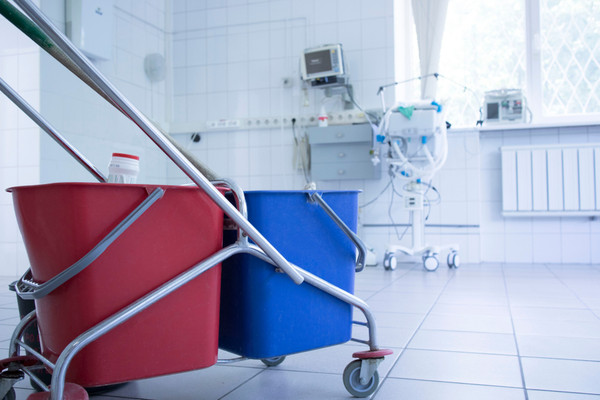How to Disinfect Medical Tables
TL;DR: Properly disinfecting medical tables is essential for patient safety, equipment longevity, and compliance with healthcare standards. Use EPA-approved disinfectants, follow manufacturer guidelines, and apply careful cleaning methods to preserve table upholstery.
Do:
- Read disinfectant labels for material compatibility.
- Follow contact time instructions.
- Rinse and dry surfaces after use.
Don’t:
- Mix chemicals (can damage materials or cause toxic fumes).
- Skip rinsing between products (risk of chemical reaction).
Keeping your medical supplies, including exam eextables, treatment chairs, and even massage tables, clean is important to the integrity of your practice.
Why? Because proper disinfecting is essential for stopping the spread of pathogens that cause disease to keep your patient safe. Additionally, routine cleaning can extend the lifespan of your medical exam table upholstery and parts, ensuring your investment lasts.
Properly disinfecting medical tables takes more than a wet wipe or some soap and water. Read on to learn the ins and outs of how to clean this important medical equipment.
The Importance of Disinfecting Medical Equipment
Medical exam tables and massage tables are high-touch surfaces. Patients come into direct contact with them during every visit, which means they can harbor bacteria, viruses, and fungi if not properly disinfected.
The cleaning, disinfection, and sterilization of medical equipment (including furniture) is a trifecta that helps uphold:
- Patient Safety: Disinfecting medical equipment helps prevent cross-contamination between patients.
- Professional Standards: Regulatory bodies like the CDC, FDA, and EPA stress the importance of using approved disinfectants.
- Durability: Routine cleaning with the right solutions can prevent cracking, fading, or premature wear of table upholstery.
When considering how to disinfect massage tables or medical exam tables, remember that not all surfaces are the same. Vinyl upholstery, power-adjustable tables, and soft massage table padding all require slightly different care to maintain both cleanliness and material integrity.
Methods of Disinfection
First things first, it’s important to note that not all disinfectants are created equal. The Centers for Disease Control and Prevention notes that disinfectants are not interchangeable, and incorrect concentrations and inappropriate disinfectants can result in excessive costs.
These costs can include:
- Tangible damage to medical equipment (cracking upholstery, corroding metal parts).
- Abstract costs to patient and staff health if pathogens spread.
For this reason, always use commercial formulations registered with the EPA or cleared by the FDA.
There are two broad methods of disinfection for medical equipment:
Chemical Disinfection
Widely used in hospitals, clinics, and wellness centers. Examples include:
- Alcohol
- Chlorine and chlorine compounds
- Formaldehyde
- Glutaraldehyde
- Hydrogen peroxide
- Iodophors
- Ortho-phthalaldehyde (OPA)
- Peracetic acid
- Phenolics
- Quaternary ammonium compounds
These are often considered the best disinfectants for medical tables when used correctly.
Physical Sterilization
On the other hand, a physical sterilization process would rely on things like heat, UV rays, pressure, radiation, etc. Many hospitals and medical practices may rely on a combination of both methods for the best results.

Do’s and Don’ts of Disinfecting Medical Tables
When disinfecting medical equipment, always:
- Read product labels carefully to confirm compatibility with your table’s upholstery.
- Follow application guidelines to ensure effectiveness.
- Avoid mixing chemicals, which can damage surfaces or create toxic fumes.
Manufacturer Guidelines for Disinfecting Medical Equipment
While you can’t go wrong with using the chemical sterilant recommended by the CDC, you can also find helpful advice from medical exam table manufacturers. Here is what some of the most well-known medical exam table manufacturers advise when it comes to disinfecting equipment.
Midmark
The experts at Midmark remind us that all disinfectants and cleaning agents contain chemicals that degrade your vinyl medical exam table covers to some extent. They recommend washing your upholstery weekly using a mild liquid soap and water mixture. Also, disinfect upholstery as recommended by the CDC using a solution of standard bleach and water mixed 1:10 (10%).
This easy 4-step procedure can be followed:
- Position the table in a flat position.
- Disinfect upholstery per the disinfectant/cleaner’s instructions.
- Rinse with clear water.
- Wipe with a clean towel or cloth.
Disinfecting Tip: Make sure to thoroughly wash and dry all surfaces when switching between disinfectants and cleaners to prevent adverse chemical reactions that could cause permanent damage to your upholstery.
Brewer
Brewer recommends that all surfaces be cleaned according to your end-user facility’s guidelines; however, they do provide some general recommendations.
A solution of 10% household liquid dish soap with warm water applied with a soft, damp cloth will remove most soiling. When it comes to how to disinfect medical exam table upholstery, consider using:
- 70% isopropyl alcohol
- 0.28% diisobutylphenoxyethoxyethyl dimethyl benzyl ammonium chloride, 17.2% isopropanol
- 0.25% dimethyl ethyl benzyl ammonium chlorides, 0.25% dimethyl benzyl ammonium chlorides
- 7.85% sodium hypochlorite
- 0.5% hydrogen peroxide
For soft vinyl upholstery, try to avoid hard cleaners like quaternary cleaners. Phenolic disinfectants are the best choice for vinyl products, though properly diluted quaternary can also work.
Disinfecting Tip: Make sure to unplug power medical exam tables and any equipment connected to electricity before cleaning to avoid burns or electric shocks.
Clinton
Another well-known medical exam table manufacturer, Clinton uses only premium, high-quality vinyl for upholstery. Of course, care should be taken when cleaning to ensure that the upholstery or color is not affected by the cleaning agent.
To accomplish this, use only mild cleaning agents on upholstery such as a 1:1 mix of ammonia and water or a 1:4 mix of bleach and water. Always rinse thoroughly with clean water after disinfecting and pat the surface to dry.
Disinfecting Tip: Before trying a new cleaning disinfection product or method, test it on an inconspicuous area to make sure it doesn’t cause any damage.
Disinfecting Massage Tables: Special Considerations
Unlike medical exam tables, massage tables are often used in wellness and spa environments, but cleanliness is just as important. Sweat, oils, and skin cells can build up quickly, creating a breeding ground for microbes.
Steps for how to disinfect a massage table:
- Remove any linens, sheets, or covers and launder them in hot water.
- Wipe the table with a mild soap solution to remove oils and debris.
- Apply an EPA-approved disinfectant compatible with vinyl or PU leather surfaces.
- Rinse with clean water and dry thoroughly.
For portable massage tables, avoid saturating the padding or wooden frame. Instead, use a soft cloth to apply the disinfectant.
Take Care of Your Medical Equipment
At Exam Tables Direct, we offer a variety of power exam tables and manual treatment tables from these top brands and more. Each comes with care guidelines to help you maintain proper cleaning, disinfection, and sterilization of medical equipment.
You can rest assured that your medical examination table is made with high-quality upholstery and a guide to help you properly disinfect it.
Shop medical exam tables for sale from Exam Tables Direct today.
Recent Posts
-
How to Disinfect Medical Tables
TL;DR: Properly disinfecting medical tables is essential for patient safety, equipment longevity, an …26th Aug 2025 -
ABCs of the Accessible Exam Room Requirements
TL;DR: ADA-compliant exam rooms are essential for equal care. Key elements include accessible entran …30th Jul 2025 -
Discover the Best Spa Chairs for Your Practice
TL;DR: Choosing the right spa chair impacts patient comfort, staff efficiency, and overall med spa s …29th Jul 2025



